Lovis Corinth (1858-1925)
Get a Corinth Certificate of Authenticity for your painting or a COA for your Boucher drawing or print.
For all your Corinth artworks you need a Certificate of Authenticity in order to sell, to insure or to donate for a tax deduction.
How to get a Corinth Certificate of Authenticity is easy. Just send us photos and dimensions and tell us what you know about the origin or history of your Corinth painting, drawing or print.
If you want to sell your Corinth painting, drawing or print use our selling services. We offer Corinth selling help, selling advice, private treaty sales and full brokerage.
We have been authenticating Corinth and issuing certificates of authenticity since 2002. We are recognized Corinth experts and Corinth certified appraisers. We issue COAs and appraisals for all Corinth artworks.
Our Corinth paintings, drawings and print authentications are accepted and respected worlwide.
Each COA is backed by in-depth research and analysis authentication reports.
The Corinth certificates of authenticity we issue are based on solid, reliable and fully referenced art investigations, authentication research, analytical work and forensic studies.
We are available to examine your Corinth painting, drawing or print anywhere in the world.
You will generally receive your certificates of authenticity and authentication report within two weeks. Some complicated cases with difficult to research Corinth paintings or drawings take longer.
Our clients include Corinth collectors, investors, tax authorities, insurance adjusters, appraisers, valuers, auctioneers, Federal agencies and many law firms.
We perform Lovis Corinth art authentication, appraisal, certificates of authenticity (COA), analysis, research, scientific tests, full art authentications. We will help you sell your Lovis Corinth or we will sell it for you.
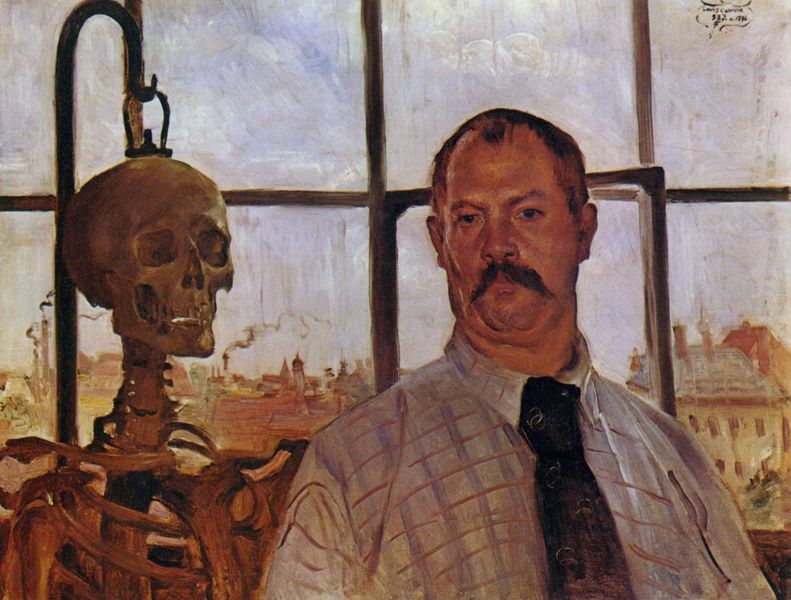
Self-Portrait with Skeleton 1896
Lovis Corinth was a German painter and printmaker whose mature work realized a synthesis of impressionism and expressionism. Corinth was born in Tapiau, East Prussia. He studied in Paris and Munich, joined the Berlin Secession group, later succeeding Max Liebermann as the group’s president. His early work was naturalistic in approach. Corinth was initially antagonistic toward the expressionist movement, but after a stroke in 1911 his style loosened and took on many expressionistic qualities. His use of color became more vibrant, and he created portraits and landscapes of extraordinary vitality and power. A self-portrait is in the Museum of Modern Art, New York City.
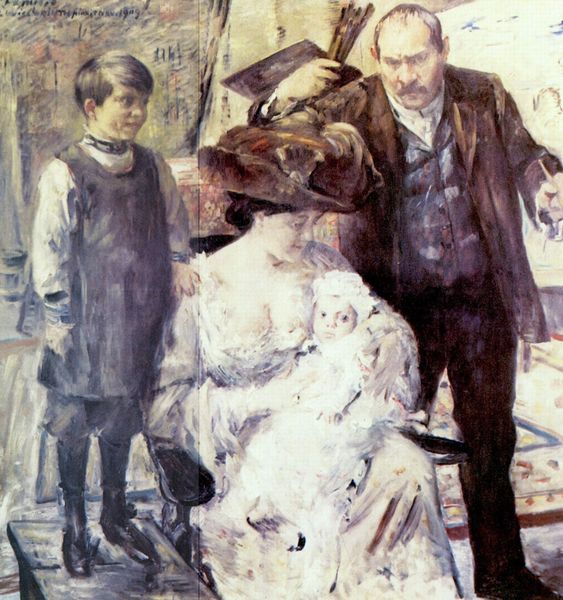
Corinth with Family 1909
Corinth showed an early talent for drawing and in 1880 he attended the Munich Academy, which rivaled Paris as the avant-garde art center in Europe at the time. There he was influenced by Courbet and the Barbizon school as they were interpreted by the Munich artists Wilhelm Leibl and Wilhelm Trübner. He then traveled to Paris where he studied under William-Adolphe Bouguereau at the Académie Julian. In 1891, Corinth returned to Munich, but in 1892 he abandoned the Munich Academy and joined the very first Sezession. In 1894 he joined the Free Association, and in 1899 he participated in an exhibition organized by the Berlin Secession. These nine years in Munich were not his most productive, and he was perhaps better known for his ability to drink large amounts of red wine and champagne.
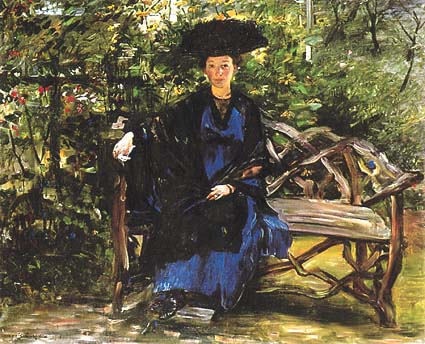
Frau Else Kaufmann in the Garden 1911
In 1900 he moved to Berlin, where he had a one-man exhibition at a gallery owned by Paul Cassirer. In 1902 at the age of 43, he opened a school of painting for women and married his first student, Charlotte Berend, some 20 years his junior. Charlotte was his youthful muse, his spiritual partner, and the mother of his two children. She had a profound influence on him, and family life became a major theme in his art.
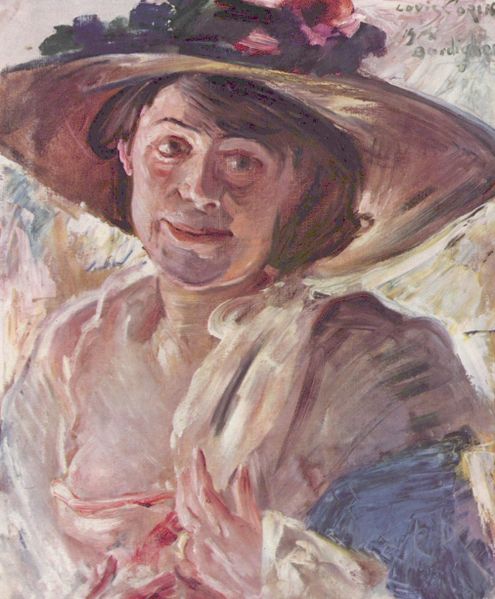
Portrait of Charlotte Berend-Corinth 1912
In 1911 he suffered a stroke, and was partially paralyzed on his left side. With the help of his wife, within a year he was painting again with his right hand. It was at this time that landscapes became a significant part of his oeuvre. From 1915-1925, he served as President of the Berlin Secession. In 1925, he traveled to the Netherlands to view the works of his favorite Dutch masters. He caught pneumonia and died in Zandvoort.
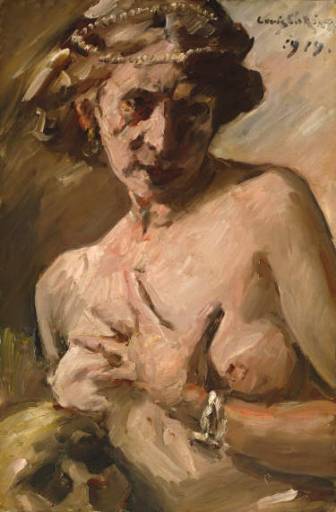
Magdalen with Pearls in her Hair 1919
Corinth explored every print technique except aquatint; he favored drypoint and lithography. He created his first etching in 1891 and his first lithograph in 1894. In 1919, he experimented with the woodcut medium but only made 11. Corinth was quite prolific, and in the last fifteen years of his life he produced more than 900 graphic works, including 60 self-portraits. The landscapes he created between 1919 and 1925 are perhaps the most desirable images of his entire graphic oeuvre.
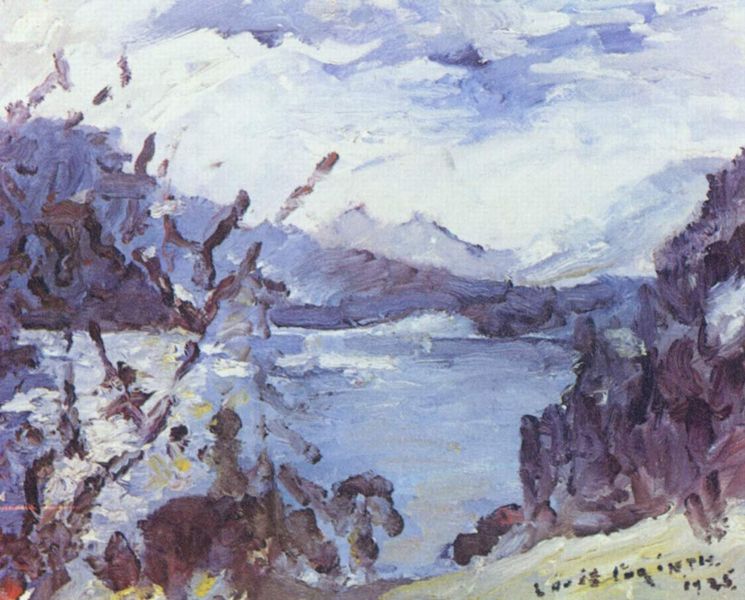
Landscape 1925
Still wondering about a late 19th century or early 20th century German painting in your family collection? Contact us…it could be by Lovis Corinth.
